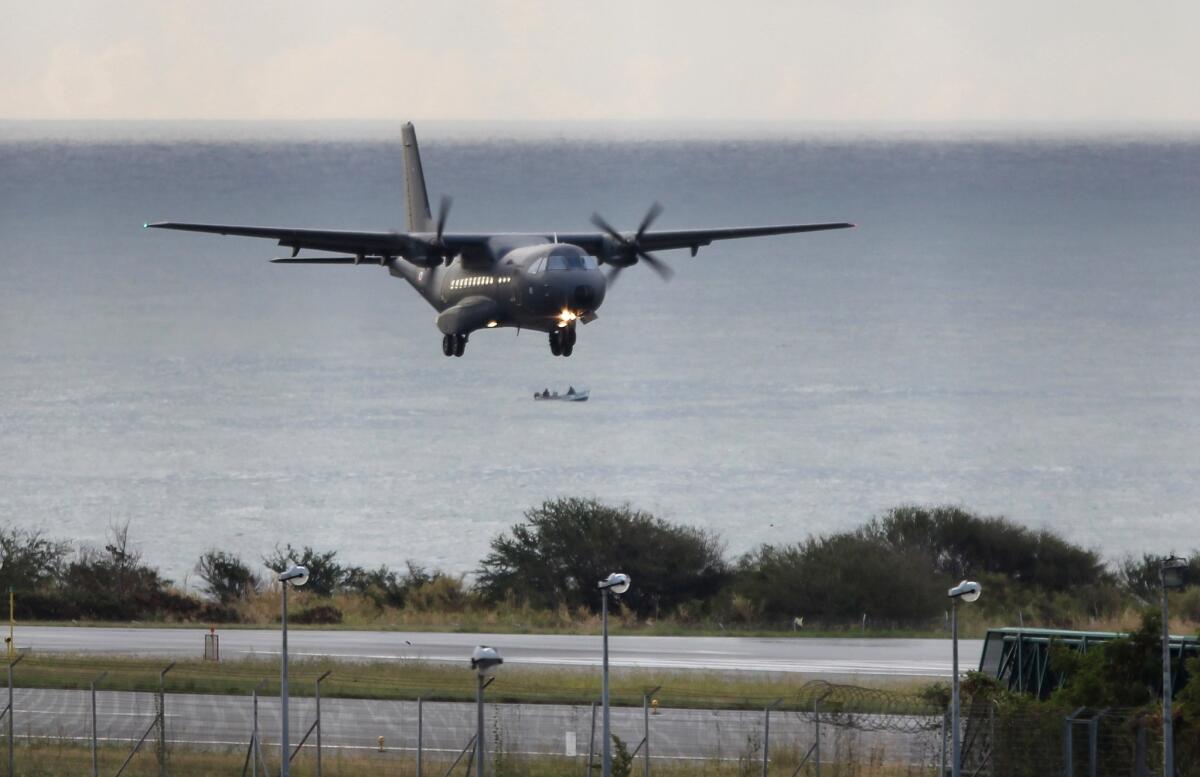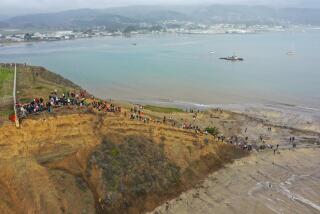France steps up search for debris from Malaysia Airlines Flight 370

A French Air Force plane taking part in the search for wreckage from Malaysia Airlines Flight 370 lands in Saint-Marie on the French island of Reunion on Friday.
French authorities launched a massive air, sea and land search around the Indian Ocean island of Reunion on Friday in the hopes of finding debris from Malaysia Airlines Flight 370.
Military airplanes and helicopters began flying over a 75-mile by 25-mile zone around the east coast of the island, where part of an airplane wing was found last week.
French troops and gendarmes have also been deployed to comb the beaches and coastline, and locals are planning an inch-by-inch trawl this weekend of the area where the debris washed up.
Dominique Sorain, the prefect, or state representative, for the French overseas department, told a news conference Friday that the sea search would stretch as far as the maritime waters of neighboring Mauritius. The zone was defined by French military in the region based on weather patterns and sea currents, journalists were told.
“France is fully playing its role in this international operation, by making available all necessary means to help throw light on this tragedy,” France’s overseas and transport ministries said in a statement Thursday evening. “The French government understands the pain of the families for whom the discovery [of the wing piece] has awakened the hope of discovering the circumstances of Flight MH370’s disappearance.”
The search for clues about the fate of the plane has centered on Reunion since the wing part, known as a flaperon, was discovered by a team of beach cleaners on July 29.
After experts at a French military laboratory near the southern city of Toulouse examined the debris this week, Malaysian Prime Minister Najib Razak declared it was from the missing Boeing 777, which took off from Kuala Lumpur to Beijing on March 8, 2014, with 239 people aboard.
The French authorities have been more cautious, saying only that there is a strong probability that the flaperon came from MH370 and insisting that more tests are needed to confirm this. These tests are ongoing.
Ninety pieces of debris have been found on the beach at Saint Andre on Reunion in the last nine days and have been sent for analysis. However, there has been no confirmation that any of them are from the Boeing 777 or any other aircraft, Reunion officials told journalists on the island Friday.
There is growing anger among families of the passengers over the seemingly conflicting reports coming out of Paris and Kuala Lumpur.
On Thursday, Malaysian Transport Minister Liow Tiong Lai said an airplane window and seat cushions had been found on Reunion and handed over to French investigators, who later denied they had received any new debris.
The French public prosecutor’s office says there have been no errors in its communications with the public.
“We have to talk within a judicial framework, which means we have to be rigorous, complete and reliable,” an unidentified legal official told the French magazine, L’Express. “We will speak with certainty when the experts do so. There are still tests to be carried out.”
Ghyslain Wattrelos, a 50-year-old Frenchman whose wife and two children were traveling on MH370, told another French news magazine, Le Nouvel Observateur, that Malaysia was “playing the misinformation game,” and he was not convinced that the plane crashed.
“They’ve lied from the first day,” Wattrelos said. “Everyone is lying. The aircraft was hijacked, that’s obvious! The transponders were cut, and the plane took an intelligent trajectory flying close to borders to avoid radars. Clearly there was someone at the controls.”
He said he was waiting for “irrefutable proof” of what happened to the plane.
“Right now we’re far from that,” he added.
Willsher is a special correspondent.
More to Read
Start your day right
Sign up for Essential California for news, features and recommendations from the L.A. Times and beyond in your inbox six days a week.
You may occasionally receive promotional content from the Los Angeles Times.






